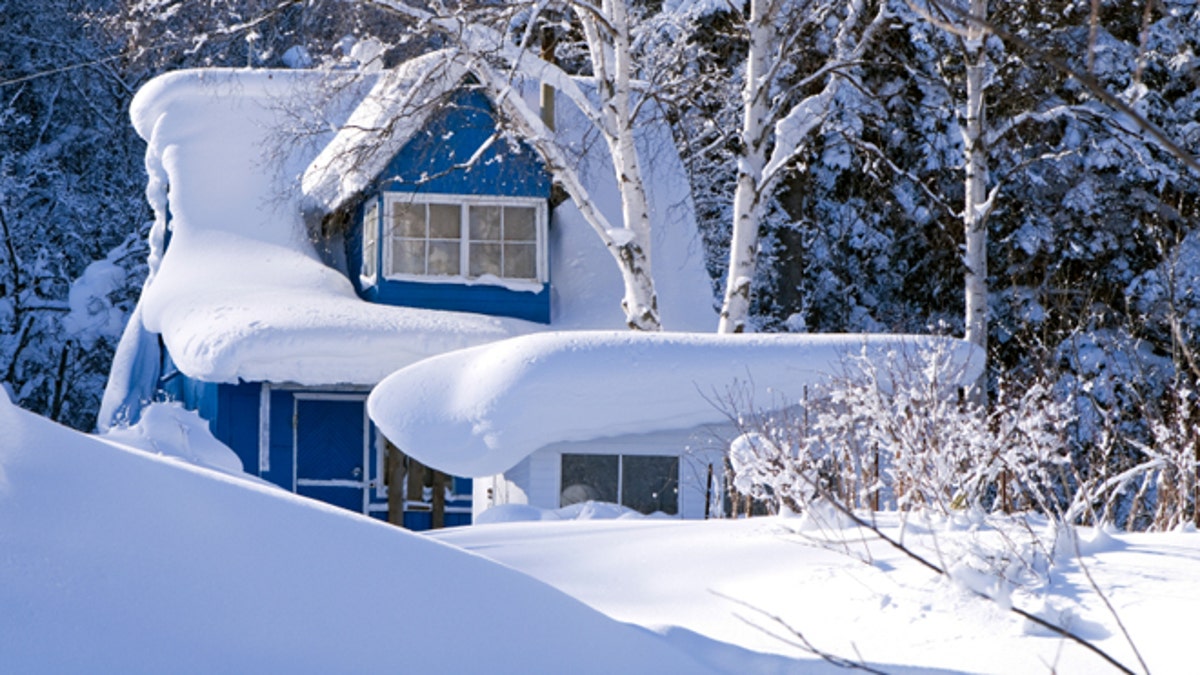
(Irina_Bekulova)
Winter is on its way, but it’s not quite here yet. Before your home is covered in a blanket of snow, you’ll want to get your yard ready for the frigid months ahead. Prepping your yard isn’t only about being a good homeowner, it can also protect your house and family. Here are some common dangers around the yard to take care of before the first snowfall.
Poor Grading
When the winter snow melts, it can quickly transform your backyard into a springtime swamp. A flooded yard can ruin a lawn and can even damage your house’s foundation, an extremely expensive problem to fix. To prevent this sort of flooding, you need to fix your yard’s grading and drainage. Water should flow unimpeded toward the street; so, in order to prevent pooling, you’ll need to fill in any depressions in the yard with soil and cover with grass seed or sod. This is a simple fix if you just have a few flooded areas, but if your entire yard is drowned in the spring or after a heavy rain, you should hire a landscaper to fix the problem. To improve drainage, you’ll also want to ensure that your roof’s eaves are free of debris and that the drainage spouts are secured and pointed away from the foundation of your house.
Overgrown Trees
As winter winds blow and heavy snow weighs down branches, you could be left with a felled limb that can damage your roof or come crashing in through the window. Before the snow starts to fall this year, make sure to trim back any overgrown branches, especially those near the house. You’ll also want to look for signs of disease and blight, which can weaken trees and make them less likely to survive harsh weather. Check for discolored or blotchy leaves, unhealthy-looking bark or cracks in the limbs or trunk of the tree. Because there are many different things that can be making your tree sick, it’s best to contact an arborist if you do suspect a problem. A trained professional can give you the correct diagnosis and deal with the tree in a way that won’t cause the problem to spread.
Protect Yourself From Home Invaders
As the winter chill sets in, pests and vermin start looking for places to escape the cold. Protect yourself from an invasion this winter by taking a few simple steps. First, seal up any openings in the house, such as cracks beneath doors, the areas where pipes enter the home from outside, or holes in window screens. Moving potted plants inside can also be one of the causes of home invaders, bringing in any number of insects. To prevent this, spay plants with an insecticidal soap before bringing them in for the winter.
Prevent Ice Dams
Those dangling icicles on the edge of your roof might look picturesque, but they might also be a sign that your roof is being damaged by the winter weather. Ice dams occur when poorly insulated attics melt the snow on top of the roof, causing it to flow down and refreeze along your eaves. Over time the ice can back up under the shingles at the edge of the roof, soaking your ceiling, which, in turn, can create rot and mold growth. If you notice that the snow quickly melts on top of your roof, it’s a good indication that you need to increase the insulation in your attic and improve ventilation to exhaust some of the warm air.
Reseal the Driveway
As temperatures rise, water pools in cracks and crevices. When it drops below freezing again, the ice expands, worsening those cracks. This winter-long process of expanding and contracting can chew up a driveway, leaving you with a disaster in the spring. Prevent the winter weather from tearing up your driveway by resealing it this fall. Head to a local hardware store and pick up some driveway patching material to fill in the cracks, as well as a bucket of sealant to protect the driveway from the elements.